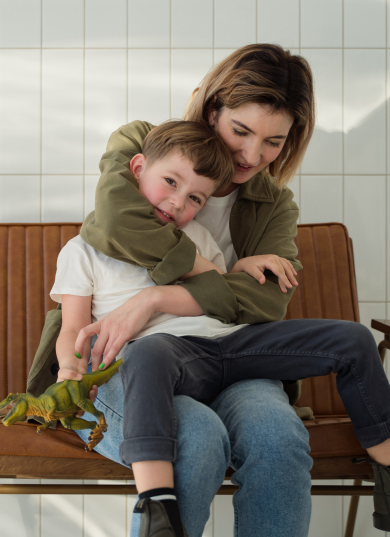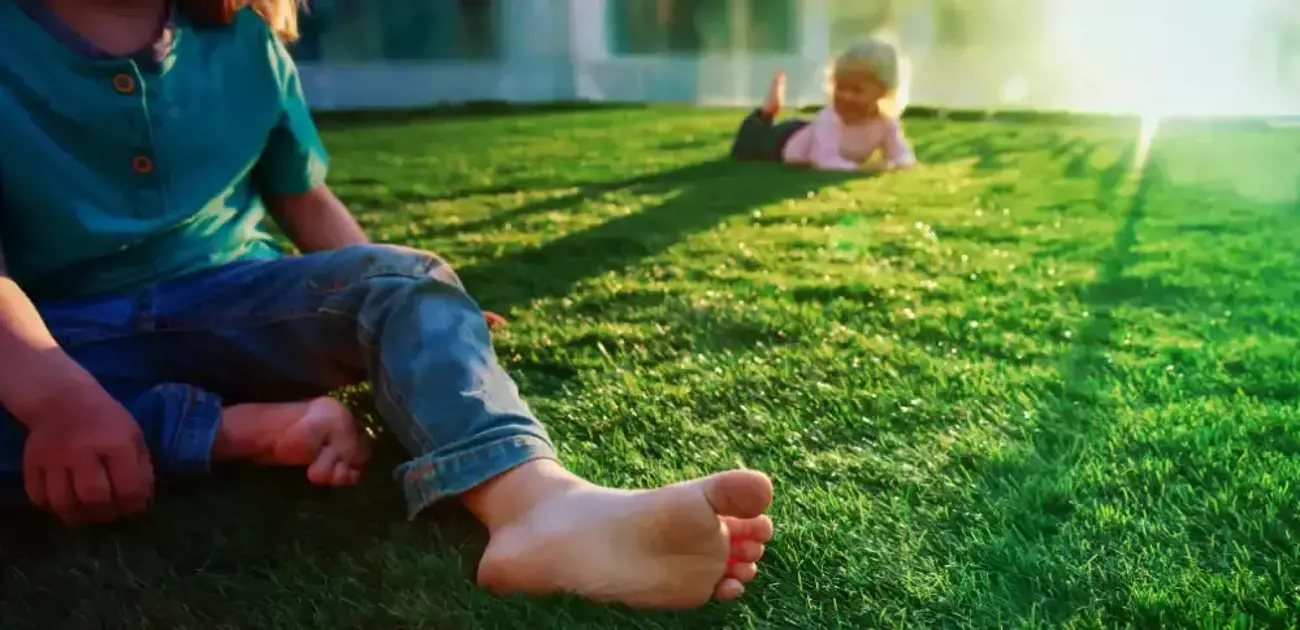Shoes do a great job at keeping little feet comfy and safe, but in the early years, there’s a big case for going barefoot a lot of the time.
Wearing no shoes supports young children’s learning and development, and although you might worry that your under five will trip on something – or step in something – there are some very good reasons to lose the shoes and put your child’s feet first.
Here are 5 bare foot benefits in the early years.
1. Going barefoot supports brain and nervous system development
Babies are born with thousands of nerve endings in each foot, and touching things, like wet grass or soft sand, with their bare feet, help your bub grow new neurological connections and tune in to its surroundings.
Paediatrician, Dr Kacie Flegal, says bare foot walking encourages ‘presence of mind and conscious awareness’ in little ones, and it supports the development of:
- Proprioception (aka spatial awareness)
- Balance
- Coordination, and
- Neuromuscular strength (which involves nerves and muscles of foot and ankle joints working together to create movement).
Dr Flegal says going sans shoes also helps to provide a great platform for the development of the ‘higher brain centres’ that are responsible for emotional control, problem-solving, language, social skills, and self-assurance as your child grows.
2. Going barefoot helps with walking
Health experts say toddlers should be in bare feet (wear shoes that are soft-soled) as much as possible when they’re learning to walk, so they can feel what their feet touch, and absorb important sensory information along the way.
As your child moves from a cautious toddle to a confident stride, walking barefoot:
- Strengthens their foot muscles and ligaments
- Develops the foot arch and joint mobility
- Supports good posture and body alignment, and
- Encourages a natural, healthy gait.
Barefoot play can also help your child to stay upright. Podiatrist, Tracy Byrne, says, ‘The feedback [toddlers] get from the ground means there is less need to look down when you walk barefoot, which is what puts them off balance and causes them to fall.’
As they pick up the pace, bare feet may also prevent injuries, because your child has full control of their grippy feet. The soles of barefoot kids will toughen up with more use, and they also learn how to tread lightly and assess potentially ‘hurty’ surfaces, or sharp objects, like gravel. Plus, there are no pesky shoelaces to trip over!
3. Going shoeless frees up little feet to grow
Your child’s feet grow fastest in their first four years, and they need room to lengthen and widen without being squished into a shoe shape.
Over time, the soft foot cartilage your baby was born with ‘ossifies’ into harder bone, and barefootedness allows their feet to naturally develop as bones strengthen, toes spread, and a foot arch develops.
Heath experts say ill-fitting footwear can harm your child’s soft foot bones and cause conditions such as flat feet, so it’s important that any shoes they do wear, fit well. Toddlers need a flat, flexible sole, a solid heel backing, and laces, straps or fasteners that stop their foot from slipping around.
4. Bare feet feel good!
Apart from the health benefits of going barefoot, there's something truly liberating about casting off the shoes and letting busy, little feet breathe. Going shoeless allows your child to relax, play, blow off steam, and re-awaken the senses in direct connection with the natural environment (hello tickly grass, squelchy mud and warm sand!).
Human-made surfaces like carpets, concrete and climbing equipment also ignite the senses and boost the mood. And whether your child removes their shoes at home, at child care, or in a safe outdoor space, they’re likely to feel happy or calm when their feet are on the loose.
5. Ditching shoes is practical
Last, but not least, a shoeless approach can make things easier for you.
If your little one doesn’t like wearing shoes, removing them from the equation is a happy solution for the two of you. Barefootedness also cuts down on shoe-cleaning, because if your child has a toilet training accident, paints their toes green, or decides to jump in puddles, all you need to do is rinse their feet and move on with the day.
And what about germs?
Well, if you’re worried about the nasties your child might pick up from the earth beneath when he goes to walk or play barefoot, it’s comforting to know that our skin is designed to keep out pathogens (organisms that cause disease), and hands are much more likely to touch things that cause illness (thus, the importance of hand hygiene). Barefoot kids are healthy kids, indeed.
It is important to scout out places that are safe for little feet, put sunscreen on bare skin, and explain when shoes do need to be worn on children's feet. There are also options for custom minimalist shoes or kids barefoot shoes that support the natural movement of your child's certain muscle groups as if they're just walking barefoot. But there are lots of good reasons (and places) to go shoeless.
Whether you hit the backyard or the beach, there’s much to be gained when you free the feet!

































